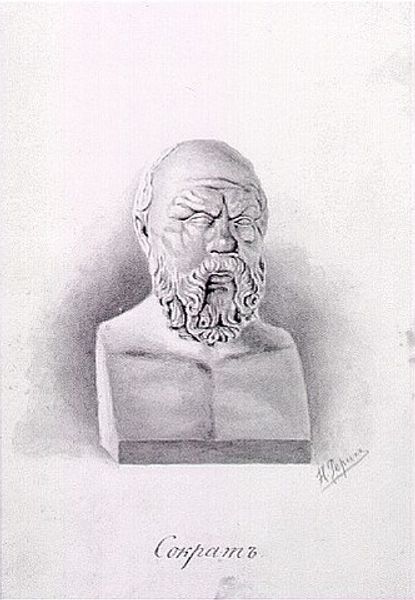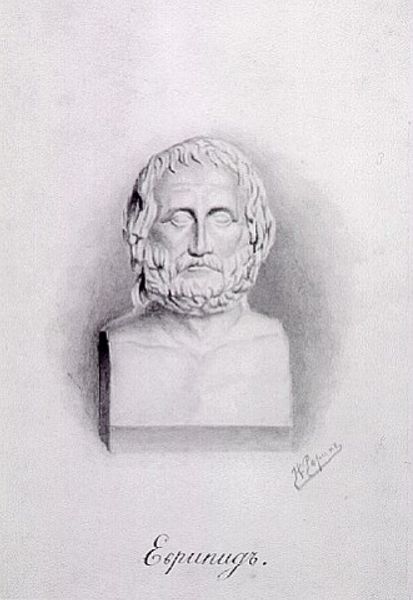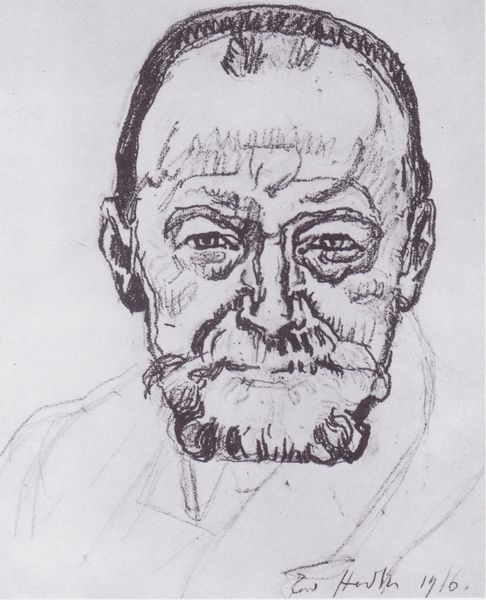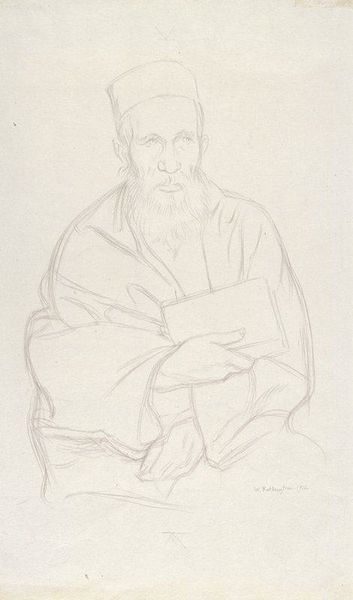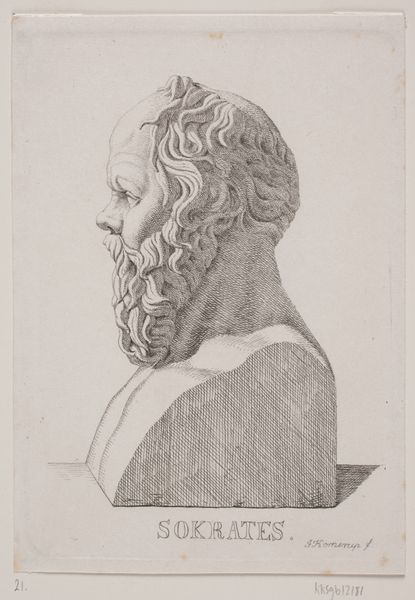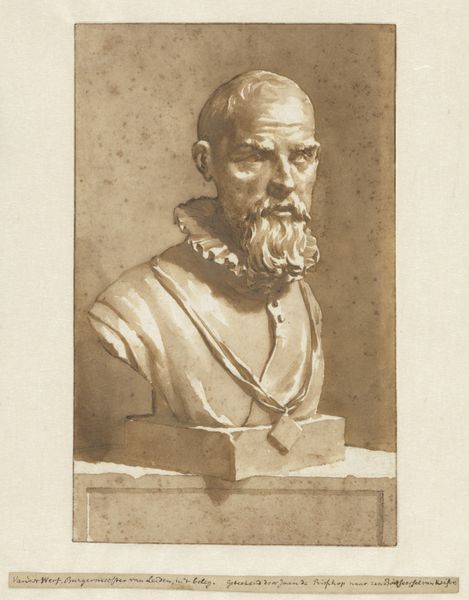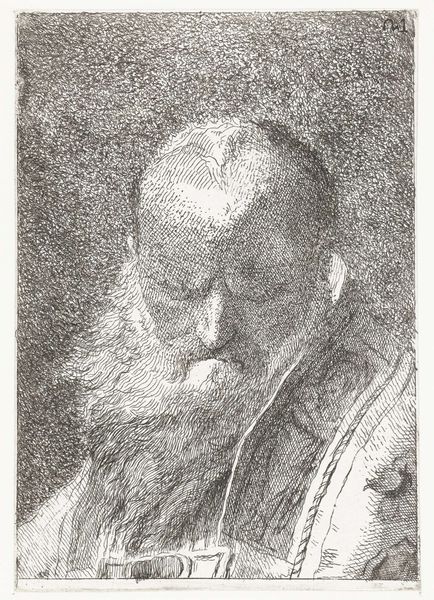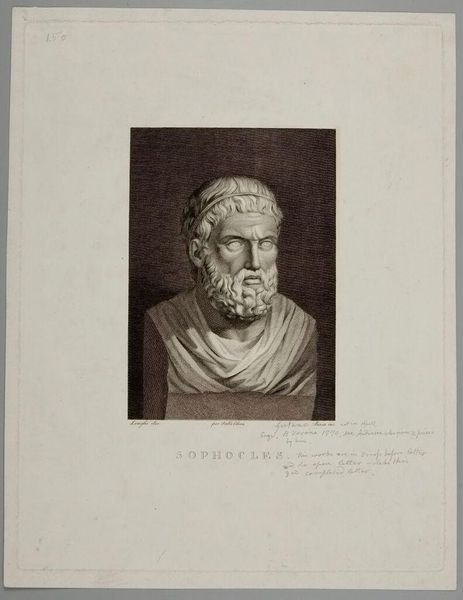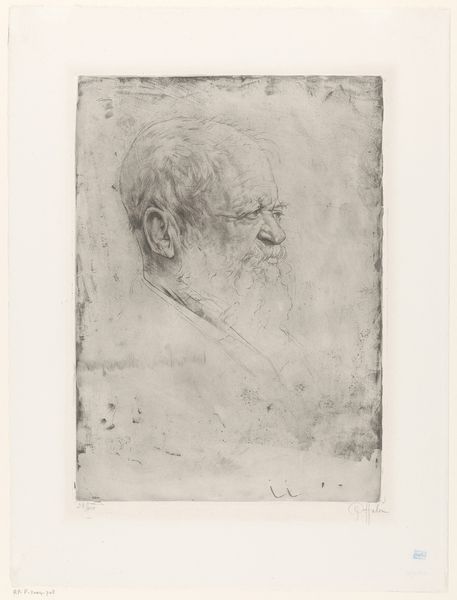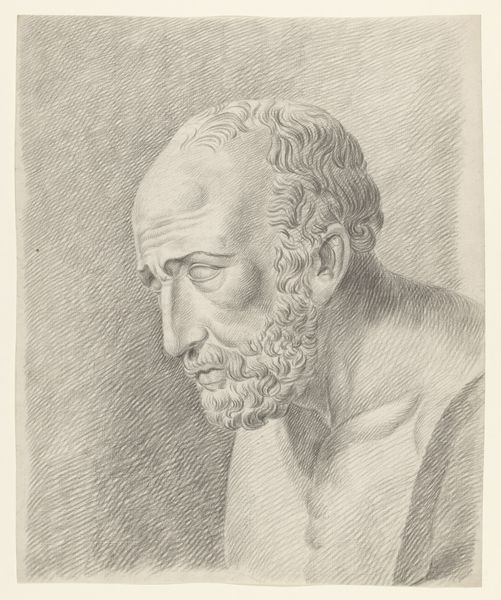
drawing, pencil
#
portrait
#
drawing
#
greek-and-roman-art
#
figuration
#
pencil drawing
#
pencil
#
academic-art
#
realism
Copyright: Public domain
Curator: Here we have Nicholas Roerich's 1893 pencil drawing, "Aeschylus." Editor: My initial impression is one of austere monumentality, even in such a simple medium. The figure seems timeless, almost ageless, despite its specificity. Curator: Indeed. The choice of pencil on paper lends itself well to capturing the stoic, philosophical aura of Aeschylus, the ancient Greek tragedian. Roerich masterfully uses chiaroscuro to give the sculpture a palpable weight and volume. The light delicately defines the planes of the face. Editor: Speaking of planes, the sculptor clearly had certain intentions when originally forming that artwork of Aeschylus. That’s something. Note also that Roerich's emphasis on the eyes--or rather, the absence of distinct pupils--further enhances the sense of detached wisdom. We know from iconography how sight, light, and insight connect. Curator: Precisely. And it is in the details of line work that Roerich seems to emphasize a particular reality or structural element of the model; each line plays a vital role in defining form and suggesting texture. Editor: The beard becomes the focal point, signifying wisdom, experience, and a link to ancient traditions. The drapery around the shoulders is rendered with simple yet suggestive strokes, symbolizing Aeschylus’s role as a figure enveloped in the history and culture of his time. This speaks volumes about Roerich's perception. Curator: His reduction of Aeschylus's figure down to only a bust further isolates the subject and emphasizes intellectual prowess through form. This method also forces the viewer to address Aeschylus solely from the perspective of a fellow thinker, separated from the chaos of physical life. Editor: This particular representation, and the material employed by Roerich, suggests Aeschylus stands for not only tragic drama but also poetry, civic responsibility, and the foundational myths that continue to inform our understanding of the world. Curator: Thank you. By deconstructing the components, we see how even a subtle composition can express not only realistic features of a historical figure, but also more complicated philosophical elements. Editor: An exercise in symbolic distillation—a reminder that images, like the stories of Aeschylus himself, become vessels of cultural memory.
Comments
No comments
Be the first to comment and join the conversation on the ultimate creative platform.
